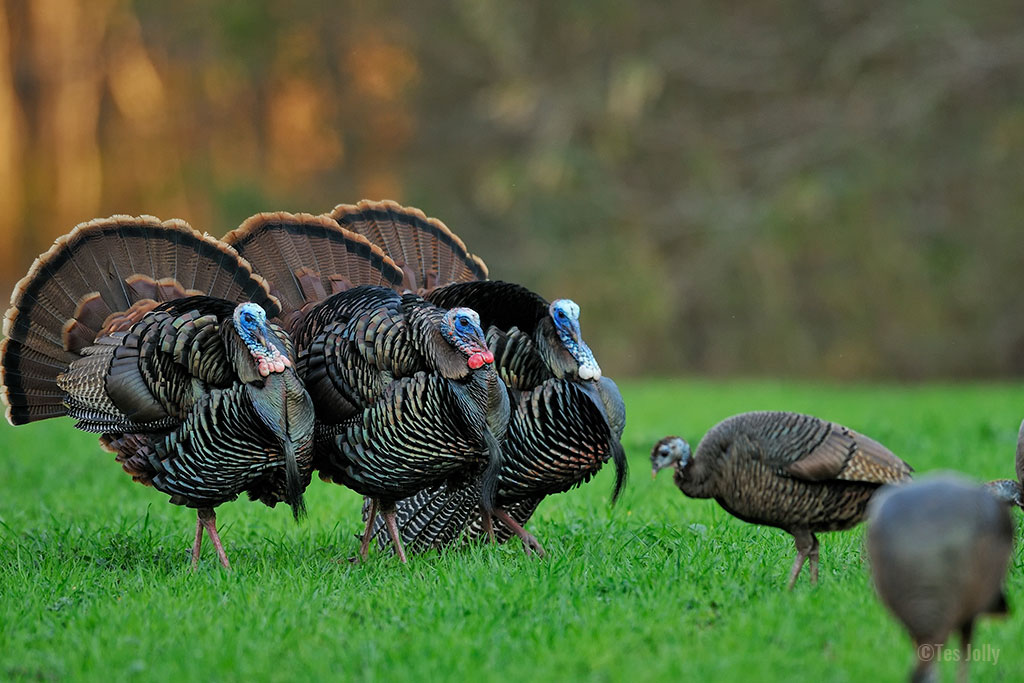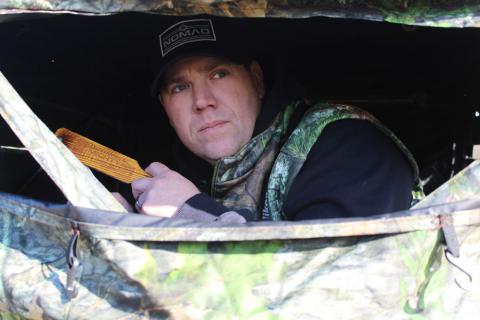Austin Delano
One major question we get asked during late winter and early spring is, “What can I plant for my turkeys?” The same question is often asked during the late summer about doves and waterfowl. Let me start by saying, you can’t wait until just before the hunting season and expect to plant an effective food plot for anything. Most all plantings that will be attractive to birds involve “seed production.” There are many varieties available for seed production, but the earliest maturing seed producing plants still require at least 60 days of growth and most require 90-plus days of growth. I say all that to convey the point; you need to be thinking 4-6 months ahead to really do it right.
Growing food for birds is relatively easy and a little less complicated than growing food for whitetails. Let’s take turkeys as an example. Wild turkeys are opportunistic omnivores and take advantage of a wide variety of food sources as they become available. Through the spring and summer there are an abundance of insects, berries, and plants that keep turkeys in a pretty tight home range.
As fall approaches, the insects are fewer, most all the berries and preferred seeds are gone, and turkeys begin to move around and transition into different types of food. While some acorns and other hard mast are great food sources for turkeys, they don’t produce heavily every year, and on drought years they can be almost non-existent. Having a food source specifically for your turkeys that will be available at key times of the year could be the answer to keeping your birds at home through the winter.
WhistleBack is a warm season blend of sorghum, three varieties of millets, and sunflowers. This mix is designed to produce massive amounts of seed, and at the same time offer cover for many species of upland birds. This blend contains varieties that all grow and mature at different heights offering food to birds as small as quail and doves, on up to pheasants or turkeys.

Our modern day food plot planting practices are not very conducive to feeding quail, turkeys, etc.; we plant every available open piece of ground for our deer and figure the birds will be fine. It doesn’t take a large area to feed a lot of birds and designating a third or a quarter-acre section out of some of your deer plots for a strip or perimeter of seed production will go a long way in feeding your game birds, in addition to adding some cover for your deer herd.
As said earlier, these seed producing plants need adequate time to grow, produce seed, mature, and dry down. The plant varieties in WhistleBack will mature in 70-90 days and once the seed heads mature and dry up, they will begin to naturally drop seeds providing feed for all birds.
As the fall turns into winter and birds really have to begin searching for food, the stalks of the blend will weaken with the freezes and thaws allowing seeds to be reached and knocked off by the birds. Test plots of this blend held turkey, quail, and other small song birds from September on through the following March. Some turkeys even learn that later in the winter they can step on some of the smaller stalks and push the seed head toward the ground.
This blend also makes a very good bedding area for deer when planted in larger plots and it can also be used for a buffer or a transitional zone between the woods or bedding areas and your other food plots. Sorghums, millets, and sunflowers all require the same basic planting depth and ground preparation should be as follows:
No-till drills work great for these seeds; most drills have a setting for planting all of these seed-producing plants. If using traditional planting methods, to kill all existing vegetation, I suggest spraying the area to be planted with a non-selective herbicide (such as Roundup) about a week to 10 days before planting. Then the soil can then be disked or tilled and then cultipacked or rolled to create a firm seed bed. Seed can then be broadcast and dragged in with a chain harrow or cultipacked again. Ideal planting depth is about one inch. Obviously seed left on the surface of the soil is easy picking for all types of birds and insects.
A pH of 6.2-7.0 is needed for optimum growth and seed production; however, millets, sorghums, and sunflowers are fairly tolerant of acidic soils, allowing you to plant for your birds in areas with less than ideal soil conditions. Most all of these seed producing plants and blends can use about 300 pounds of 13-13-13 per acre, or an equivalent if you don’t have a current soil test to go by. They are also nitrogen lovers, and to boost growth and seed production, you may implement a secondary nitrogen application 4-6 weeks after germination much like you would corn. 34-0-0 or 46-0-0 are pretty common nitrogen-only fertilizers that one can find most anywhere in the country.
Another very popular planting for turkeys and waterfowl is chufa. It is, without a doubt, an extremely attractive planting. However, many folks don’t think about planting it until the late winter just before the spring hunting season, and it simply won’t work. Chufa needs to be planted during the late spring/early summer when there is at least 90-plus days of growing season left before the threat of frost arrives. This gives the chufa time to establish, build a root structure and begin to develop the tubers that turkeys are so crazy about.
It’s also pretty easy to manage weeds in chufa since it is in the “nutsedge” family of plants. This means we can use a grass-specific herbicide like Weed Reaper to kill any invasive grasses or a broadleaf herbicide such as 2,4-D. As the chufa matures during the early fall, it can begin to provide food all the way into the next spring and ideally keeping your turkeys at home right up until the season. In northern zones, chufa plots are often frozen before they are completely eaten. This can be a good thing because there may be chufa available for the spring hunting season after the soil thaws.
This same principal of proper timing and planning applies for other plantings for doves, ducks, pheasants, etc. Planting areas specifically for birds is beneficial for a property, not just from a hunting standpoint. Oftentimes these plantings are used in strips or as a transition zone adjacent to food plots for deer. The step-down effect from timber to grassy seed producing plants to lower growing green groceries creates diversity and makes for awesome wildlife habitat for creatures as small as beneficial insects, little mammals and song birds on up to whitetails and turkey.




























